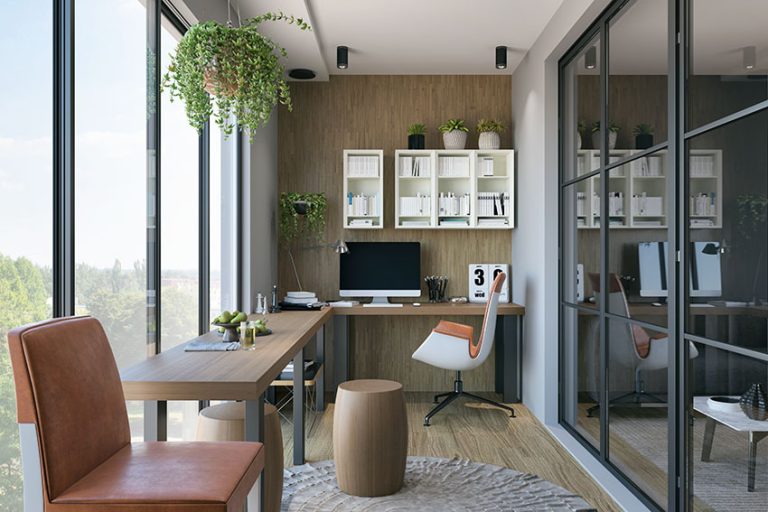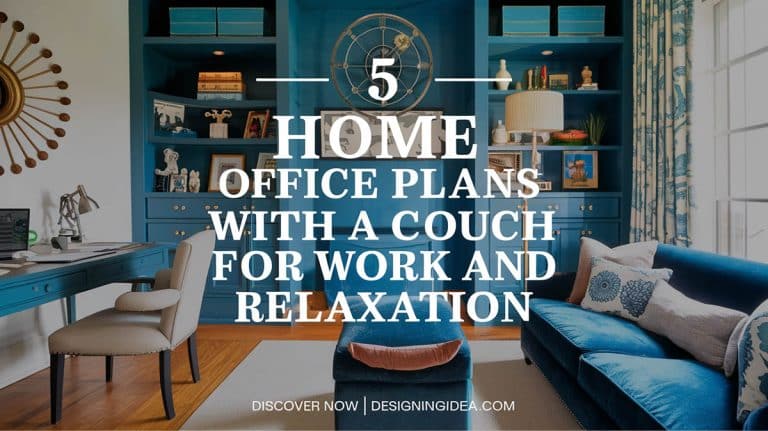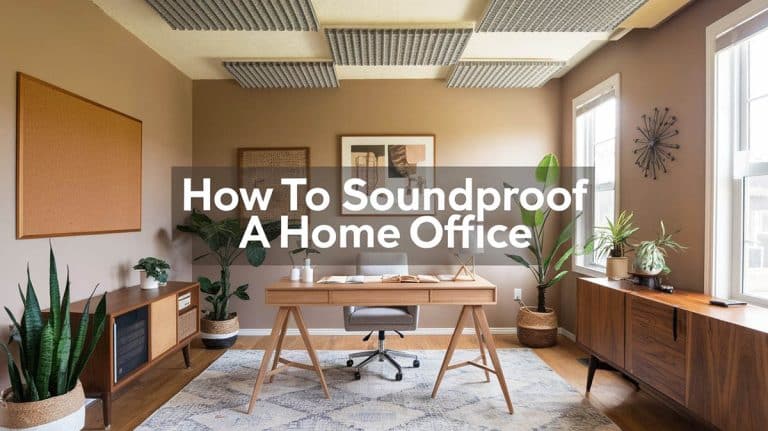Home Office Design For An Effective Workspace

Telecommuting, as coined by Jack Niles, offers many employees new opportunities. One of them is the option to move to another home for a cheaper cost of living while maintaining your employment with a company. Also, remote work, even as the system has transitioned into an alternative option for workers, is said to have provided a solution for productivity and social isolation. But whether you have transitioned to a remote work opportunity or are still working in a commercial office, a home office is a much-needed space. So, what makes a good home office design?
Home Office Layout Planning
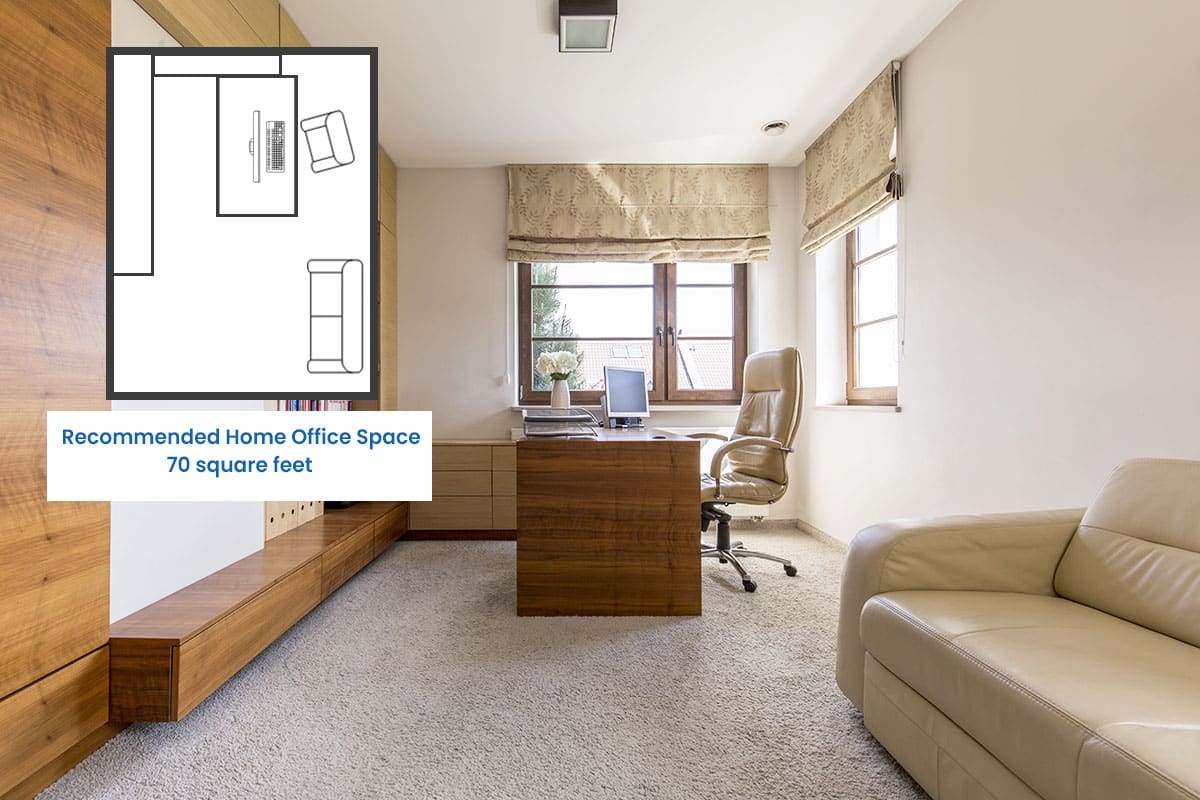
A highly functional home office starts with a well-planned layout. This also allows you to maximize the available square footage and create a room that goes well with your other functional areas. To start off, you’ll need to consider factors such as:
Space Availability: The larger your home office, the more elements can be added. The recommended square footage of a home office is 70 sq. ft or 6.5 square meters, where a standard desk and chair can fit along with minimal storage space. Home offices with 120 to 150 square feet can already fit a comfortable sofa with additional storage cabinets.
Work Requirements: What is your home office for? If you’ll be working on a computer, you’ll obviously need a desk and chair. Additional tables or an adjustable table, depending on the available space, can be used as a drawing or tool area. If you have a long table, you can zone out areas according to their function.
Workflow: Specifying your workflow during your typical work or business hours helps the designer visualize and plan the layout of your home office. This also prevents you from positioning your work area in a distracting place. Basing your layout on a smooth workflow ensures productivity and even increases revenue.
Natural Light – Where is your window located and oriented? How you arrange and position your furniture can be influenced by the natural light coming through. Prevent glare and heat while receiving natural light during the day.
Accessibility or Circulation – The ease of movement within your home office and adjacent areas is an important factor in your office layout. However, due to limited space or simply because there is no suitable private space for an office, it can be challenging if not impossible to achieve the recommended requirements.
Utilities – Don’t forget to consider your electrical, WIFI/router, telephone, and other utilities when positioning your furniture.
Enhancing Productivity
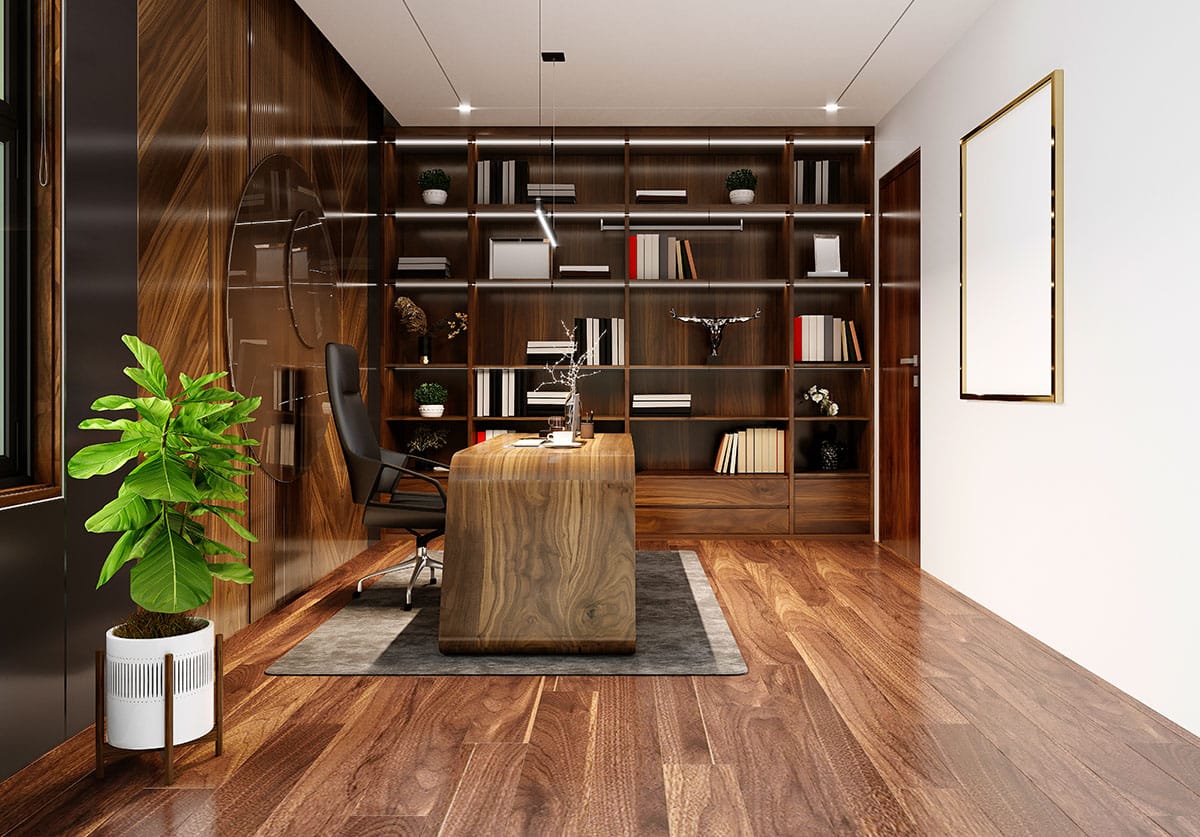
Like commercial offices, a home office’s goal is to achieve optimum productivity. This can be a challenge for a residential home especially when you live with your family where potential distractions such as noise from the neighbor or kids or pets running around.
How to enhance your productivity in a home office setting?
Enhancing productivity starts with a dedicated space or room in an office. There are many residences that haven’t planned on having an office space.
The unavailability of a vacant room usually resorts to finding peculiar spots to transform as a home office, such as under the stairs; corner of an underutilized space; closet space; attic, basement, or built-in nooks. Transforming these spaces into a modern office is also cheaper and won’t need major renovations.
Minimize Distractions
Because most of these areas are in proximity or adjacent to other functional spaces that other family members have access to, interruptions are unavoidable. Here are some ways to minimize distractions:
• Consider using noise-canceling headphones.
• Set a schedule and layout rules for family members.
• Use adjustable blinds or window screens to adjust your window treatment throughout the changing angle and intensity of your natural light.
• Use a soundproof divider if located within a room or near a functional area.
Keep an Organized and Clean Workspace
While being more comfortable in your own home is one of the perks of working remotely, there’s a tendency to be lax about being kept in your workspace. Keep your workspace clean and organized which also minimizes distractions and helps you find work files or items easier. Thus reducing your overall stress.
Personalize Your Space
Create a workspace that suits your personality while maintaining a professional look in your office. Start with the best color that suits your taste all the while and doesn’t distract you from your work. This also goes with your décor.
To maintain a clean and uncluttered look, only include essential items. You can also include comfort items such as a pillow, scarf, or a scented candle.
Create a Storage System
You can organize and create a storage system even if you have a small office by including multifunctional and adjustable storage furniture. Assign a schedule for organizing and decluttering your office space.
Ergonomic Furniture Setup
Ergonomics in the office context is about achieving efficiency and productivity at work while minimizing physical strain and ensuring comfort when working in the office environment. Ergonomics usually focuses on furniture, as these are elements that are in constant use and in contact with workers.
What to look for in an office furniture?
Lumbar Support – This is a curved or padded area in the lower backrest of an office chair. This promotes proper posture by filling along the natural curve of the back spine which minimizes strain against the lumber muscles and ligaments.
If your office chair doesn’t come with a lumber support you, can use a lumber support pillow instead. Look for office chairs with lumbar support that can be adjusted, usually with lumbar support pads or mechanisms that allow the seat to be lowered or raised.
Arm Support – A lot of office employees who use the computer usually invest in an ergonomic chair and table but have typically overlooked armrests. Having armrests is important in preventing tendonitis, carpal tunnel syndrome, and osteoarthritis, which are common disorders caused by poor posture and a lack of body support.
Along with the use of ergonomic furniture, keeping a neutral position when working is also crucial. This is when the arms and shoulders should be in a resting position, which is why arm supports are critical.
As a guide, the arm and shoulder have a range of 80 to 90 degrees, while the legs and feet have an angle of 90 to 120 degrees. A person’s torso will have a 95 to 115-degree angle with the upper legs when seated.
Guiding Measurements:
• 18 to 24 inches or 45-70 cm – The recommended distance between your eyes and the computer screen.
• 29 to 30 inches, or 73 cm – Standard height range of office desks with sitting provision.
However, the best desk height will be based on how tall you are. You can use this computation as a guide:
Step 1 – Know your height. If you often use heels even in your home office station, include this additional height measurement to your total height.
Step 2 – Divide your total height by 2. (Use inches unit)
Step 3 – Remove 8.5 inches from the product result to get the minimum desk height.
Step 4 – For the maximum desk height, remove 6 inches from the product result.
Tips:
• Place your feet flat on the floor while sitting in front of your computer.
• Position your arms at the right angle to your sides, and your elbows are recommended to be bent at a 90-degree angle.
• Chairs should have a recline of 110 degrees with support on the neck and shoulder.
Types of Ergonomic Office Chairs:
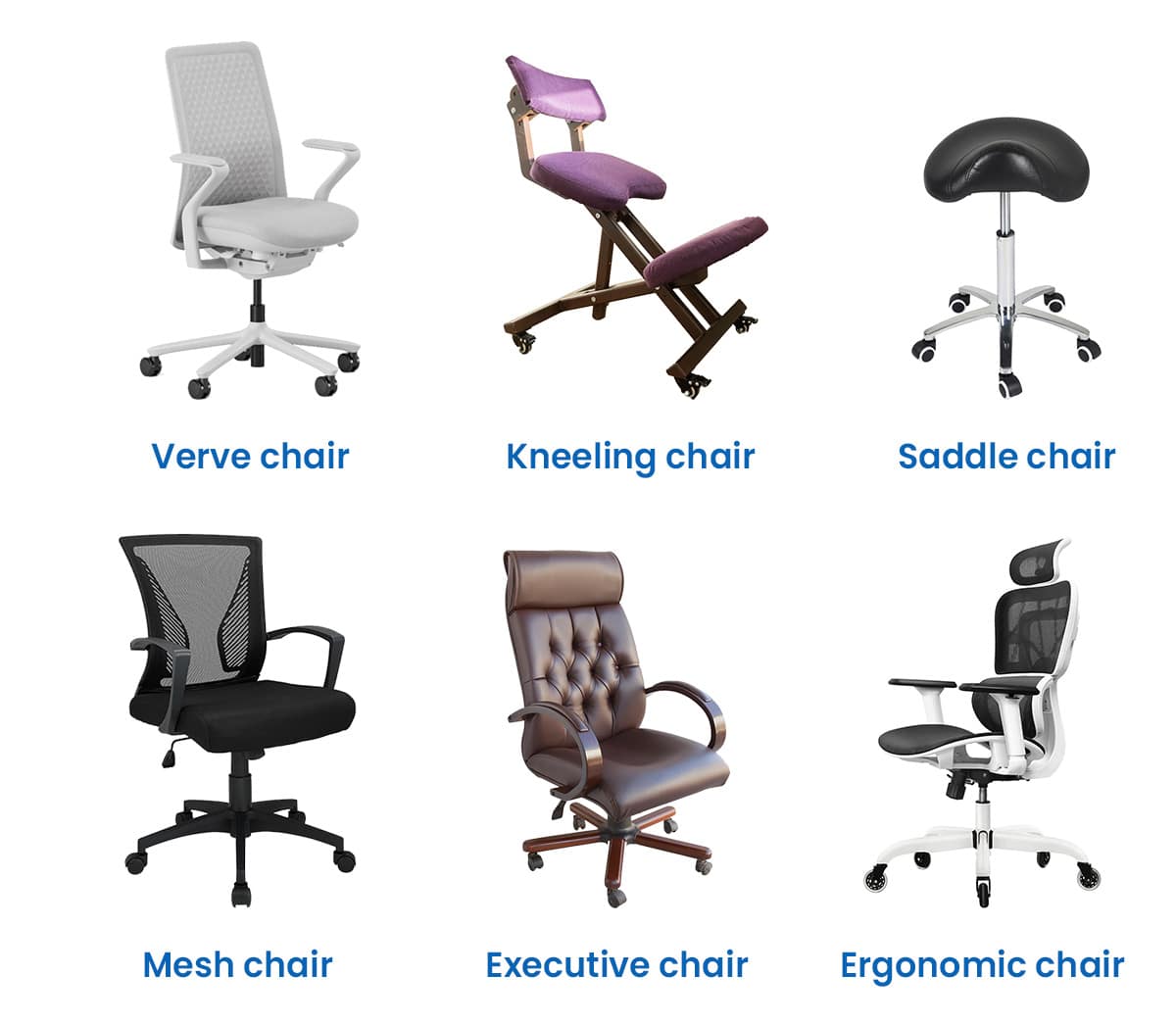
• Daily Chair
• Verve Chair
• Task Chair
• Saddle Chair
• Mesh Chair
• Kneeling Chair
• Ball Chair
• Executive Chair
• Ergonomic Stools
Lighting

According to a survey conducted by an HR advisory firm Future Workplace, having natural light and views of the outdoors is the top attribute of the workplace environment. This result is from a poll conducted among 1,614 North American employees.
Along with this survey are numerous studies that show that receiving ample natural light and having an outdoor view of nature during work hours boosts mood and lowers stress levels.
Unlike traditional office spaces, one crucial factor to consider in lighting today’s contemporary office spaces, whether commercial or residential, is the computer screen. Prolonged exposure to the computer screen can cause headaches. It is recommended to take short breaks in between work, even when you’re at home.
So, what are the best lighting specifications for a home office space?
Aim for natural light, as it is still the best ambient lighting for an office. If it is not possible, you can mimic the soft light by choosing an indirect light source from different parts of the room.
Don’t forget task lighting. Layered light is a common design approach when lighting any type of room. For a home office, any type of workspace generally needs an ambient light and a task light. If you have ample space and want to add accent lighting to highlight areas or décor, then it’s a great option, but just make sure it goes with the other lighting types you have.
Consider vertical blinds or other adjustable window treatments. Vertical blinds allow you to adjust the angle and amount of light passing through during the day.
Prevent glare and shadows. Too much sunlight or reflecting light can cause glare. Remove reflective surfaces near your window or position light fixtures that won’t cause glare. Indirect light, such as wall sconces and pendant lights, is a common lighting solution to diffuse shadows. LED bulbs are versatile options as they come in a wide range of color temperatures.
Color Temperatures:
• 5,000 to 6,500 Kelvin: – Best for work that requires alertness and focus.
• 2,700 to 3,500 Kelvin: – Best for aiming for a calm and relaxing atmosphere.
Don’t Forget Energy Efficiency. Look for the Energy Star label, as most of these LED bulbs are more energy efficient as they consume less energy but more light.
Optimizing Storage Space

Choosing an optimum storage system starts by identifying the items you will likely store or keep in your office. Even if cloud or storage banks are now available for storing work files, hard copies of our files can still be relevant based on the kind of work you do. For instance, a teacher might prefer to have hardcopies ready if needed at school, while a computer analyst might not need much storage physically in his home office.
From extendable tables to stackable bins, there’s no shortage of storage solutions that can satisfy your office’s requirements.
Stacked Storage System. A common option for maximizing space and organizing all types of items, a stacked storage system can also be a versatile option, especially with a modular build. For instance, you can remove several levels of shelves, rearrange each shelf, or reduce the size or position of the parts according to your storage requirements.
Multi-functional Furniture. Having one more function not only saves space but also makes it convenient to use, as you’ll simply reconfigure or adjust the furniture parts to assemble the needed function. Like desks that turn into a day bed, a full working table into a console, or a sofa that doubles as a bookshelf in a library. These are just a few examples of common multi-functional storage systems.
Color Psychology

• Dark & Neutral Colors – Adds depth to spaces.
• Light Colors – Reflects natural light.
Earthy Green – When you want a relaxing color but don’t want the stale blank hue, earthy green paint is a perfect envelope for a home office space. It’s relaxing in the eyes, which makes it a great wall color for people who spend a lot of time in front of a computer.
Taupe – A rich and versatile brown hue that also imbues a cozy characteristic that’s perfect for spacious home offices.
Blue-green Green– A color that is known to minimize stress and anxiety.
Pure White – Crisp, clean, and bright. The go-to color of home offices. It makes a room look more spacious, and ample natural light can energize a space.
Yellow – Stimulate creativity making it perfect for people in graphics, music, theater, or visual arts. The feel-good color, yellow also increases light.
Buttery yellow – A perfect yellow variation that’s not too overpowering and does not cause anxiety.
Blue– The most relaxing color, making it a perfect surround color that can help you focus. However, be careful not to overdo your blue shades in your home office. Instead, opt to section or get a secondary color.
Evergreen – Dubbed as the “serene color” it is great as furniture, wall, and desk color.
Red – For when you work late at night, you might want to consider adding a red-colored section on your wall. This can be at the side of your worktable or directly along your front vision to keep you stimulated.
Pick bright colors to go with your lighting to enhance the brightness. Cooler colors, that is, colors in the blue spectrum help with keeping you away while warmer colors can feel too cozy and may cause you to doze off. When choosing colors from your walls, ceiling, furniture, and lighting.
Sound Management
A quiet home office means better communication and focus. Since most of the meetings for remote work happen online, it is essential to have a silent area with no distractions.
However, as we know especially for home offices with families, sounds from pets, kids, or neighbors can be disruptive not only during meetings but also when doing your office tasks. Also, sound management includes having your business conversations confidential.
Managing sound in your home office is very important for keeping your concentration intact and keeping ambient noise from reaching your microphone when you are attending a video conference. You can purchase soundproofing materials, or another good idea is to use your bookshelves, especially if they’re up to the ceiling as sound mufflers.
Locate the direction. where noise comes from the most and position your bookshelves in that direction. Although, you can increase your chances of success by choosing a room in your house that is least affected by noise right from the start.
The following are sound management strategies that you can do in whatever type or size of home office you have:
Acoustic Art Panel. As the term implies, these are panels with a sound-absorbing core that helps reduce echo and other unwanted noise. The panels reduce noise and reverberation with most having an NRC or Noise Reduction Coefficient of .90.
The NRC comes in a range of 0 to 1, where 0 means no sound is absorbed. These panels can have high-resolution images that are typically printed on demand which means you can choose the available colors and sizes to choose from. The design is usually print-on-demand offered depending on the supplier.
Acoustical Partition or Acoustic Divider. Usually, a standalone divider that can be stretched along a certain length supported by metal framing and feet. These partitions are excellent for home offices that are integrated into another functional room. The divider provides privacy while dampening sound from both sides.
There are acoustical partitions that come with designs and are usually texturized to give it more visual appeal. Some companies offer custom acoustic partitions where you can choose the fabric color and texture as well as custom artwork.
Noise Cancelling Headphones. In-home offices where they are located in a busy household or a noisy neighborhood, noise-canceling headphones are a great way to reduce sound.
And because you have the option of the Bluetooth version of the noise-canceling headphones, you can move your working area anywhere in your home without worrying about distracting noise. However, you should take note that most noise-canceling headphones do not actually cancel the sound but significantly reduce the ambient noise.
Aesthetic Cohesion

Harmony between elements and functional rooms in your home is essential for keeping a welcoming and calming environment. This means you’ll need to make some adjustments to achieve a highly functional home office while maintaining your personal spaces as a family.
Consistent Color Scheme – Probably the simplest yet most effective way to achieve a harmonious coming together between functional rooms is having a consistent color scheme. You won’t need any major renovation and you can easily change the color scheme anytime you feel like changing it.
Common Design Style – Having a unified design style or theme that goes along every room creates that connectivity or oneness of the spaces.
Office Room-Specific Considerations
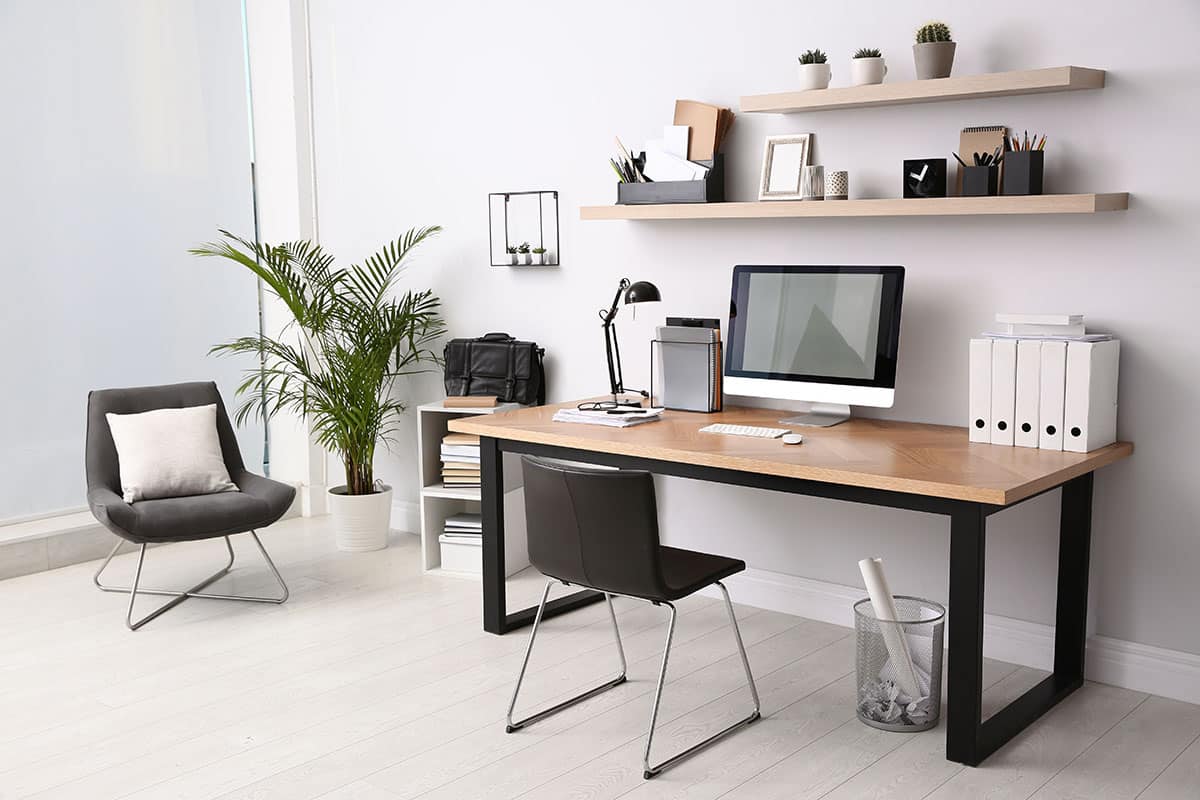
Regardless of what type of home office you have, the room size and layout become one of the first initial bases for most of the specifics of your office space. These factors come second from the type of work you will be doing in your home office.
Other factors to consider when building your home office are the lighting, privacy, temperature, acoustic and ergonomics as well as a room for personalization.
• Room Size and Layout – The common home office sizes come between the range of 70 to 150 square feet. The shape of a room is also a determining factor in how you would layout your home office. Rectangular-shaped plans usually have the workstations against the wall with one side as the circulation or pathway. Also, don’t forget to consider architectural features such as an existing fireplace, alcove, or steps.
• Electrical and Connectivity – Since most home offices are usually within another room or have been an existing room with a different function, the electrical lines may need to be relocated. Additional electrical outlets and provision for a telephone and internet connection are needed.
• Ventilation and Heating or Cooling System – According to OSHA, the ideal office temperature is from 68 to 78 degrees Fahrenheit or 20 to 26 degrees Celsius with a humidity of 20% to 60%.
• Privacy – One of the challenges of home office setup is achieving privacy. For employees living with their families, the shared living space can make a difficult private space not to mention the noise distractions. Be sure to create rules and routines that you can discuss with other family members. Acoustic panels and other privacy measures can be introduced to the space. These panels may not eliminate the noise totally but can significantly reduce the sound.
• Technology and Security Problems – If you are not tech-savvy or have a simple internet and computer setup, the privacy and security of your data may be in danger. It is best
Visit our guide to setting up a home office plan for more related content.


